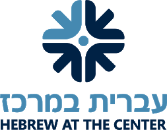Sixth Graders Explore the Anatomy and Physiology of the Brain
April 12, 2018 by
MILTON sixth graders have been diving deep in science class into a unit on human body anatomy and physiology. To enhance their learning, the students took part in Brain Awareness Week events at the National Museum of Health and Medicine. The visit was a great opportunity to explore the exciting world of neuroscience, and explore the anatomy and physiology of the human brain. The students met and learned from brain scientists, researchers, and staff from the Walter Reed National Military Medical Center, as well as from museum educators. As they rotated through stations, the sixth graders were exposed to a wealth of information and professional research in neuroscience.
In the first station, students learned about the physiology and anatomy of the human brain from the principal “brain collector” of the museum. The National Museum of Health and Medicine holds one of the biggest collections in the world of real brains, so many researchers come to study and work on them there. The students learned a bit about safety rules to prevent traumatic brain injuries and got to hold a real brain while looking at its anatomy.
In the second station, students engaged in hands-on learning about neuroplasticity with educators from the Walter Reed Army Institute of Research. The students paired up and performed a short experiment together that involved tossing plush toys along a line, then repeating the task wearing goggles that shift the vision by two degrees. The students recorded their results to show their learning curve at adapting to the new task. The sixth graders discovered that the brain can shift quite fast: after about eight throws, they could hit the line accurately while wearing the goggles. They then continued the experiment without goggles, and found that the learning curve going back to normal vision was even faster (averaged two throws). The students’ hands-on learning showed that our brains have an incredible capacity to change, demonstrating neuroplasticity.
At a third station, Professor Cruz R. Del-Cerro, a psychobiologist from Madrid, Spain, talked to the students about parental love and the way it stimulates brain development in young babies. She spoke to the students about her research on the topic, which explores how young babies use mirror neurons in the brain to imitate facial expressions. When infants are not exposed to loving faces, they do not acquire the same ability to express their feelings.
At the fourth station, the students got to meet Bill, a therapy dog. The students learned from Bill’s trainer, a retired military doctor, how the U.S. military uses therapy dogs to help veterans who have been injured or suffer from trauma. Therapy dogs are effective at bringing comfort and joy to people who are ill or suffering from trauma because many people are able to connect easily with the dogs and feel their unconditional love, prompting the brain to the oxytocin hormone. Our students learned that oxytocin is a hormone that acts on organs in the body and as a chemical messenger in the brain to regulate social interaction, playing a role in behaviors related to empathy, love, generosity, and a feeling of being secure. The students enjoyed the company of the dog and were very interested in his effect on people while talking with his trainer.
At the fifth station, the students learned about optical illusions and how they are used in brain research. A museum volunteer presented a variety of visual illusions and explained how they can provide information about the ways that the brain processes visual information. Researchers conducting pioneering studies in brain functioning use illusions to enhance their research. The students were very enthusiastic and enjoyed the seeing all the illusions.
Finally, at a hands-on activity station, the students were invited to build a model of a neuron using plastic beads. The sixth graders had fun exhibiting their knowledge of neurons and their structure. As the students worked, museum volunteers used the models to talk about the functions of neurons and to demonstrate some neurobiology basics.
Back at school, the sixth graders are continuing to learn about the brain and about the way humans learn, as they explore more aspects human anatomy, organ systems, and their fascinating functions.






